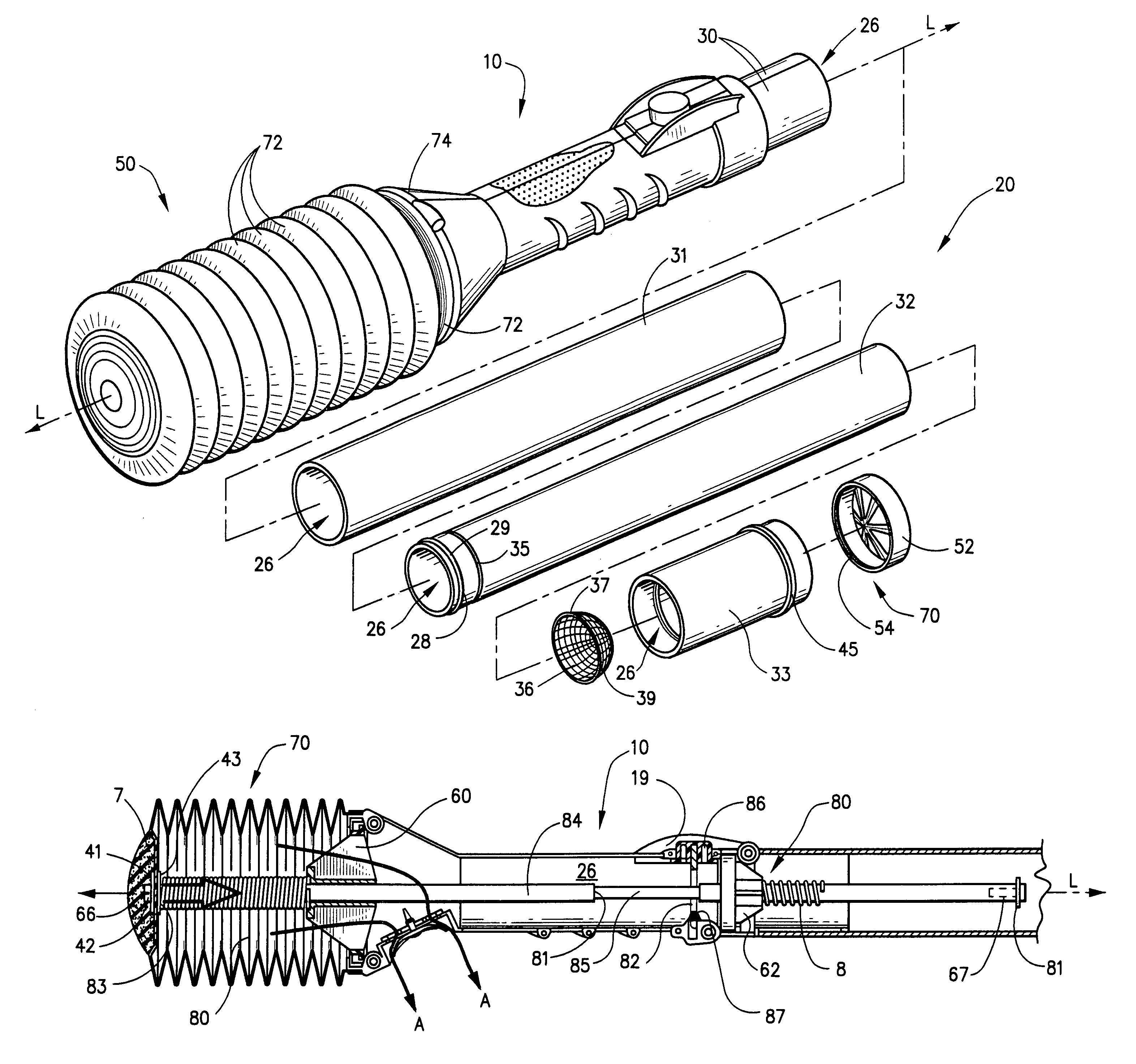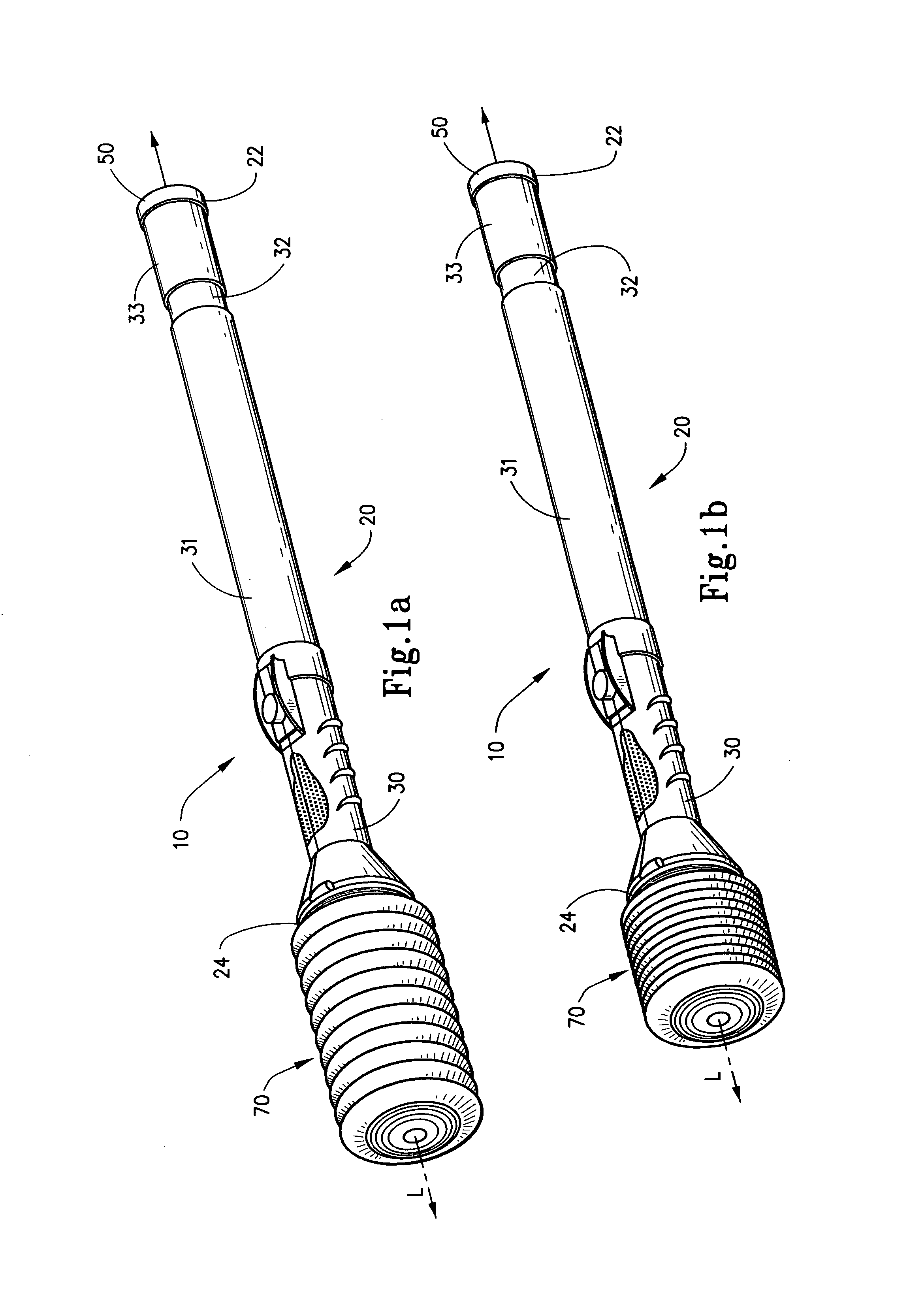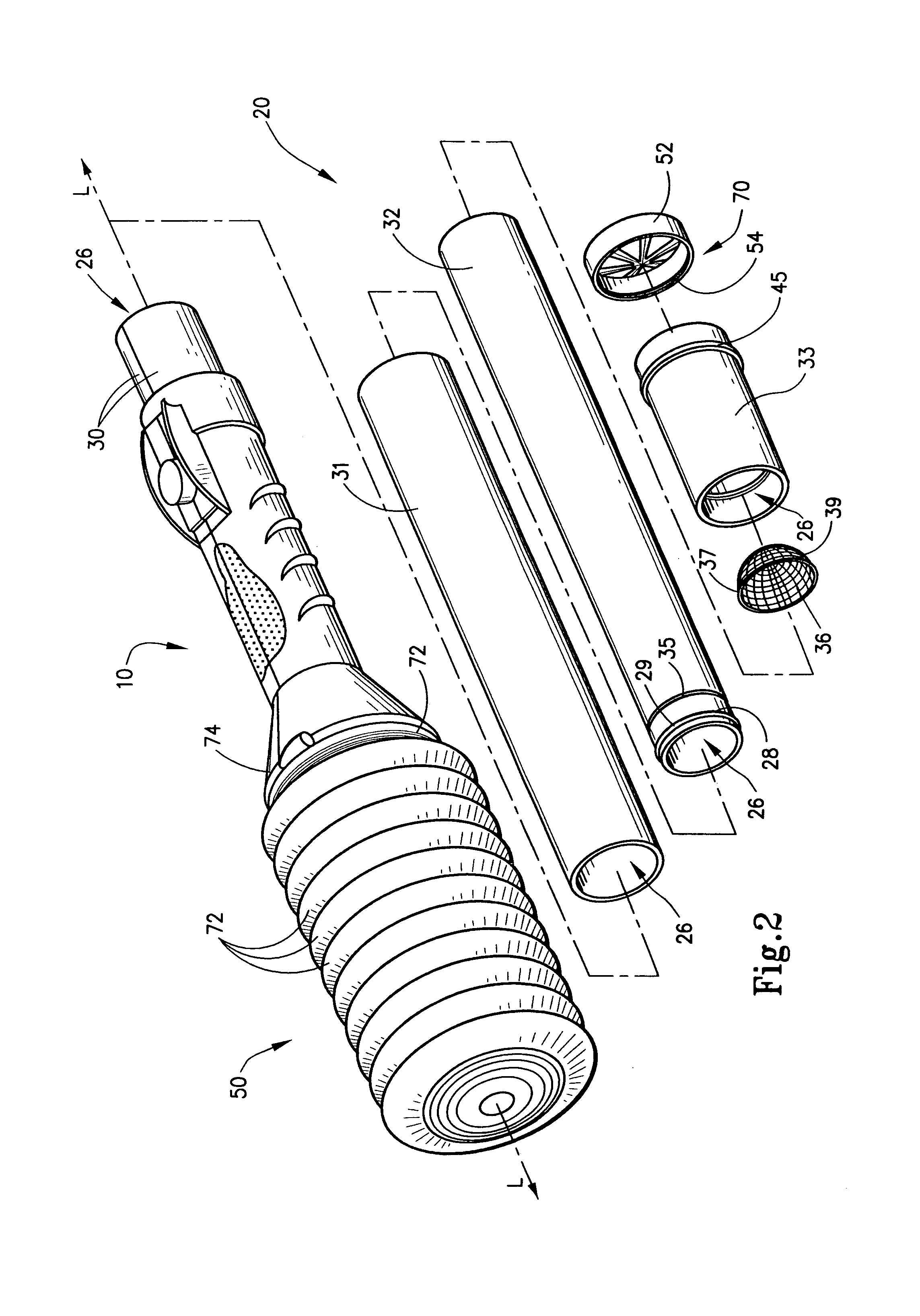Method of capturing insects
a technology of insects and traps, applied in the field of trapping insects, can solve the problems of ineffective relief of the problem in its entirety, removal or extermination, and insects that bite or sting,
- Summary
- Abstract
- Description
- Claims
- Application Information
AI Technical Summary
Benefits of technology
Problems solved by technology
Method used
Image
Examples
Embodiment Construction
[0059]The methodology of the present invention may best be appreciated with reference to the drawings wherein various embodiments of insect collection devices are shown for accomplishing the methodology. Referring more particularly to these drawings, a first exemplary embodiment of the insect collection device 10 of the present invention is introduced in FIGS. 1(a) and 1(b). Insect collection device 10 is in the form of a hand operated mechanism which can be placed in close proximity to a target insect and manually actuated to draw the target insect into a collection region through a suctioning effect. As shown in these figures, insect collection device 10 comprises an elongated and generally tubular housing 20, a movable closure 50 and a compression chamber 70. Housing 20 extends about a housing interior along a central longitudinal axis “L” from a first upstream end 22 to terminate in a second downstream end 24. Movable closure 50 is disposed on an upstream end portion of housing ...
PUM
 Login to View More
Login to View More Abstract
Description
Claims
Application Information
 Login to View More
Login to View More - R&D
- Intellectual Property
- Life Sciences
- Materials
- Tech Scout
- Unparalleled Data Quality
- Higher Quality Content
- 60% Fewer Hallucinations
Browse by: Latest US Patents, China's latest patents, Technical Efficacy Thesaurus, Application Domain, Technology Topic, Popular Technical Reports.
© 2025 PatSnap. All rights reserved.Legal|Privacy policy|Modern Slavery Act Transparency Statement|Sitemap|About US| Contact US: help@patsnap.com



